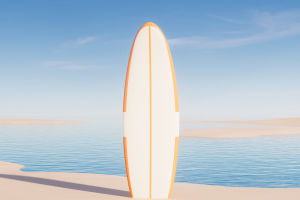The beach ball, an essential sporting equipment for summer activities, adds much joy to people's leisure time.
Although the appearance of the beach ball may seem simple, its design, materials, and various related sports are filled with rich knowledge and fun.
The history of the beach ball dates back to the early 20th century. Initially, the beach ball was not designed for entertainment but as a new sports tool used by the water. Its design was inspired by traditional soccer and basketball, but due to the ease of movement on the beach, the beach ball quickly became a symbol of leisure and entertainment.
The popularity and development of the beach ball also reflect the growing demand for outdoor activities and a focus on healthy lifestyles. Especially in the 1960s and 70s, with the rise of tourism, beach ball sales soared, and it became an integral part of vacation culture.
The material and structure of the beach ball are essential to its durability and comfort. Typically, beach balls are made from rubber, plastic, or synthetic materials, which not only withstand prolonged exposure to sunlight and contact with seawater but also maintain good elasticity, allowing the ball to remain round and bouncy when inflated.
Rubber gives the beach ball moderate elasticity during aerial movements, while plastic ensures that the ball is resistant to damage when used in water. Most beach balls are air-filled, with an inflation valve that allows them to float on water and adapt to land-based throwing and contact sports.
On the beach, both children and adults can engage in simple catch games with the beach ball, which helps burn energy and improve reaction times. Due to its relatively large size and moderate weight, it is easy to handle, and almost people of all ages can participate.
Additionally, beach balls can be used for water sports like floating ball games. In pools or at the beach, players can use it as a flotation device and engage in games involving pushing, hitting, and catching in the water. These activities not only strengthen the body but also offer the enjoyment of the coolness of water.
Beach ball activities also help reduce stress and relax the mind. Compared to other forms of exercise, beach ball activities are often more recreational and leisurely. Participants can relax and release the stress of work and life while enjoying the sunshine, sea breeze, and beach. Playing beach ball with friends and family not only offers exercise opportunities but also strengthens relationships and friendships.
From its historical origins to its modern variations, the evolution of the beach ball is closely tied to people's pursuit of a healthy lifestyle. Whether as personal entertainment or team competition, it showcases the joy of sports and the vitality of life. The next time you visit the beach, why not grab a beach ball and enjoy the endless fun of the sun, sand, and sport?


